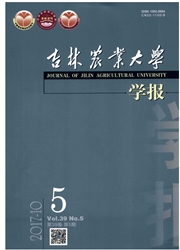

 中文摘要:
中文摘要:
采用1/2浓度Hoagland营养液培养磷高效基因型大豆BX10和磷低效基因型大豆BD2,缺磷胁迫15 d后研究其叶片显微结构和光合作用变化的基因型差异及其关系.结果表明:缺磷胁迫下大豆叶片的显微结构发生了适应性变化,叶片厚度、栅栏组织厚度和海绵组织厚度与光合速率及磷效率相关性不大;BX10与BD2相比,磷效率高归功于其较大的光合面积、较多的栅栏组织细胞(光合作用的主要细胞)及其较大总液泡面积,即在缺磷胁迫下BX10在磷利用方面表现出了较高的细胞分裂和增生速度而不是细胞增大和伸长的速度.缺磷胁迫下叶片气孔保持一定的开度对维持光合作用的正常进行较为重要.
 英文摘要:
英文摘要:
Two contrastive soybean genotypes (P-efficient BX10 vs. P-inefficient BD2) were hydroponically grown in 1/2 Hoagland solution and subjected to phosphorus(P) deficiency for 15d. P deficiency induced the adaptive change in the microstructure of leaves. Neither Pn nor P efficiency was correlated with leaf thickness, palisade tissue thickness and spongy tissue thickness. The P-efficiency of BX10 was possibly due to the bigger photosynthetic leaf area, the more palisede tissue cells and larger vacuolar area. This also implies that BX10 might have higher rate in cell division and multiplication rather than cell extension and enlargement under P deficiency. Stomata aperture was important for normal photosynthetic processes under P stress.
 同期刊论文项目
同期刊论文项目
 同项目期刊论文
同项目期刊论文
 期刊信息
期刊信息
